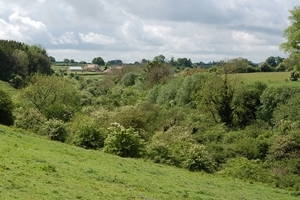 Good woodland habitat for pheasants should contain plenty of shrubs. Shrubs also create flushing points so that birds fly out at a suitable height for shooting. Natural regrowth of native shrubs is best but, where this is not possible, shrubs may be planted. Maintaining a shrub layer may require deer control. In many situations this will require co-operative control of deer numbers at the landscape scale. If deer damage is expected, do not attempt to coppice existing shrub layers or plant new shrubs without first seeking advice.
Good woodland habitat for pheasants should contain plenty of shrubs. Shrubs also create flushing points so that birds fly out at a suitable height for shooting. Natural regrowth of native shrubs is best but, where this is not possible, shrubs may be planted. Maintaining a shrub layer may require deer control. In many situations this will require co-operative control of deer numbers at the landscape scale. If deer damage is expected, do not attempt to coppice existing shrub layers or plant new shrubs without first seeking advice.
In the past, non-native evergreens were widely used as game shrubs, partly because shrub planting was not grant-aided. In most circumstances these are inappropriate because they support fewer animal species than native shrubs (particularly insects) and can out-compete the native flora.
In certain circumstances, straw bales are used to provide shelter for pheasants along the edges of woods or rides as a temporary measure while newly planted shrubs establish. The dense shade and mulch created by the bales can damage the woodland flora and should be avoided.
Recommendations
- To encourage natural regeneration, allow sunlight to reach the ground by coppicing or by ‘skylighting’. Scarifying the soil surface can encourage natural regrowth further. Coppicing or shrub cutting where deer browsing is heavy is not recommended.
- Avoid planting non-native shrubs. There are many native species that are good for pheasants. Use species that suit the local soil type and climate as these are the most likely to thrive. The Forestry Commission’s Bulletin 112 provides advice on matching species to sites.
- Non-native and invasive species should not be planted in ancient woodland. Restrict non-native shrubs to areas that are already predominantly composed of introduced trees and shrubs. Even here avoid the use of invasive species, such as rhododendron and snowberry. Indeed these should be cleared to favour native shrubs. Grant support is available to help eradicate them from ancient woodlands.
- Effective deer control is important to sustain a dense shrub layer. Advice is available from the Deer Initiative. Protection of cut coppice with tops can help. Brambles also help protect forest regrowth so are worth encouraging.
- FC Bulletin 112, Creating new native woodlands, provides more details of appropriate shrubs, trees and ground plants.
- Encouraging a shrub layer to develop will reduce predation on released pheasants.